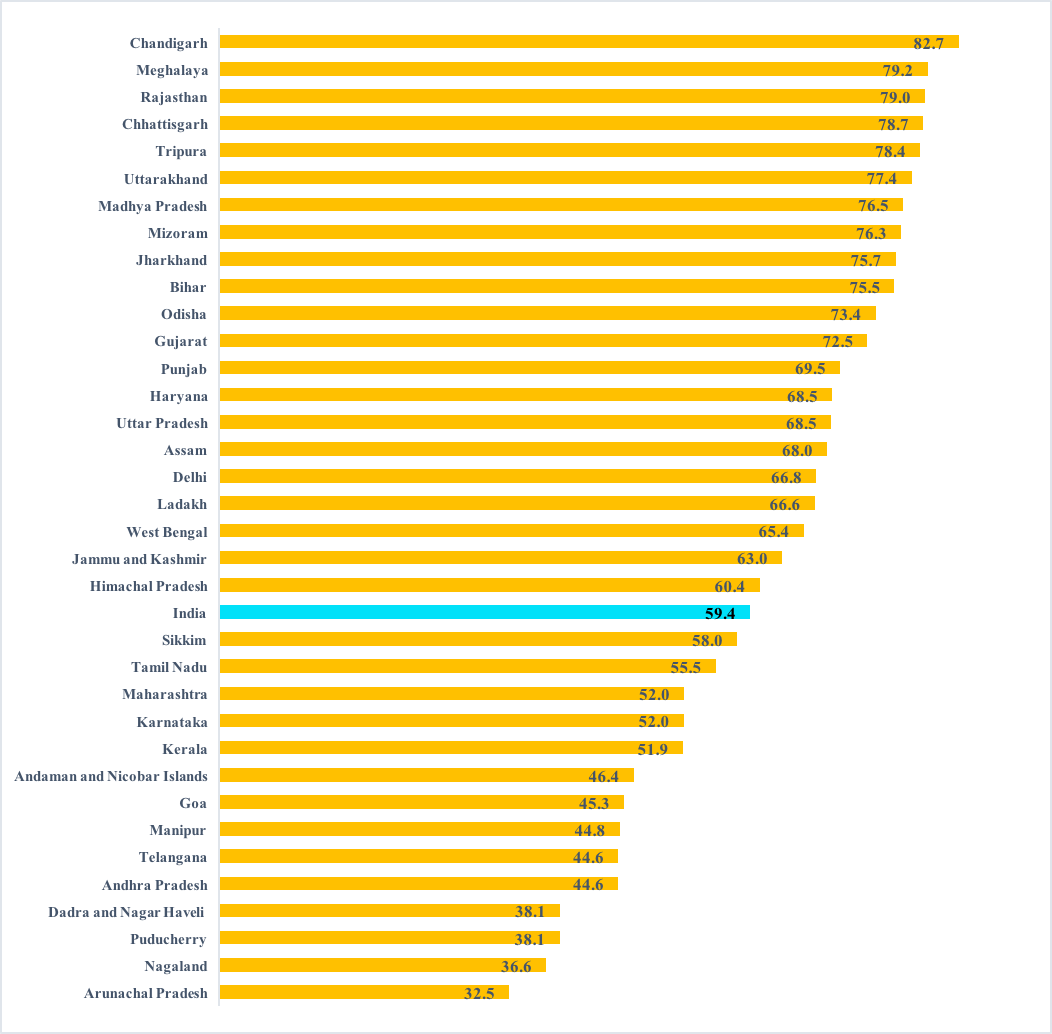COVID-19 recovery rate and its association with development in India
July 14, 2020 | Tuesday | Features
The study attempts a comprehensive understanding of the various determinants of recovery rate at the social, economic and political level
Recovery Rate in Indian States; Source: Data obtained from covid19india.org as on 30th June, 2020
The recovery rate is an important determinant of a country’s development towards achieving success over the novel coronavirus. It’s a function of a number of factors - a countrys death rate, cases requiring hospitalisation, quality of care, and discharge policies, among others. India’s recovery rate is growing steadily from an earlier low of 10-11%. It is imperative to understand the determinants of recovery rate to facilitate improvements in the same.
Despite several bottlenecks in health infrastructure, India has shown remarkable progress in terms of recovery of COVID-19 cases. The recovery rate of COVID-19 continues to steadily improve. As per latest estimates, the recovery rate among COVID-19 patients is nearly 59% (MOHFW, 2020). Over time, the spurt in active cases in India has been slower than the overall growth rate, which is an indication of the rising number of recoveries. The recent spike in the recovery rate can also be accorded to change in Health Ministry guidelines for mild and pre-symptomatic cases, more testing.
The recovery rate of India is about 60%. Chandigarh, with a recovery rate of nearly 83%, has the highest recovery rate among all state sand Union Territories. Other states whose recovery rates are impressive are states like Uttarakhand, Rajasthan, Madhya Pradesh, Jharkhand, Odisha, Gujarat, Chhattisgarh, Bihar, Mizoram, Tripura where recovery rates are above 70%
A linear regression analysis was done to understand the factors that are helping to recover from COVID-19, based on state specific statistics. Linear regression was applied to comprehend the relationship between recovery rates and state socio-economic, spatial and political variables (like population structure, percentage of population living in slums, percent share of gross state domestic product spent on health, health workers per 10000 populations, ruling party) by fitting a linear equation to the observed recovery rate.
The results indicate that the recovery rate goes down with an increase in the proportion of population living below poverty line, higher proportion of population living in slums, and more middle-aged population. An increase in the proportion of gross state domestic product spent on health, higher urban proportion, good governance and number of health workers per 10000 population lead to a significant improvement in the recovery rate.
The study attempts a comprehensive understanding of the various determinants of recovery rate at the social, economic and political level. There is an ardent need to scale up the health facilities, enable decongestion in slums, enhance medical infrastructure and focus on middle aged - economically weaker sections of the society especially in rural and crowded areas. In the absence of an exhaustive framework pertaining to recovery rate and its linkages with other variables in the social, political and economic context, this study is a novel attempt to address the issue and its policy connotations. With a better understanding of the dynamics of recovery rate and related determinants, this study can contribute towards the development of appropriate policy interventions.
Aparajita Chattopadhyay and Akancha Singh, International Institute for Population Sciences, Mumbai










